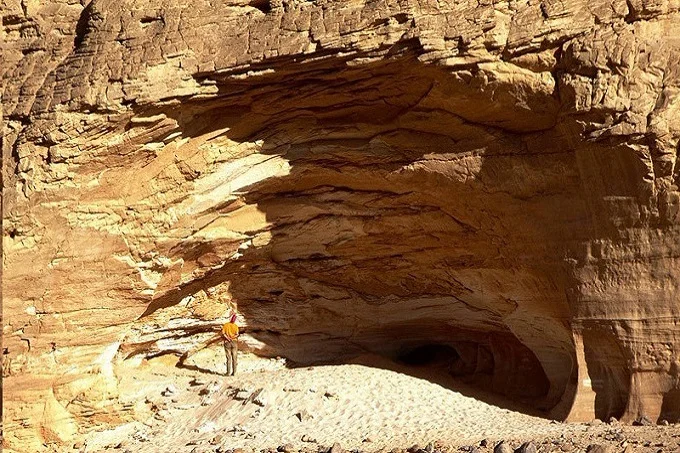In the Takarkori cave in southern Libya, scientists have discovered traces of the presence of ancient people who lived in this part of the Sahara only a few thousand years ago. There are rock paintings inside the cave, and as a result of archaeological excavations, many Neolithic artifacts and 20 skeletons of people who lived only 4-10 thousand years ago were found. Judging by the finds, this part of the Sahara was home to a significant number of people. But how did they survive in this place?
Finds in the Takarkori cave indicate that the people who lived here were engaged in the cultivation of food plants, various cereals, and oilseeds.
In addition, the presence of fat milk residues on ceramic vessels suggests that the people who lived here raised domestic animals that gave milk, such as sheep or goats. The Tadrart-Acacus mountains, where the Takarkori cave is located, do not look like a place where you can grow at least something or raise livestock, which also needs food.
But this bleak place wasn’t always like this. It’s hard to believe, surveying the lifeless landscapes of the modern Sahara, but only a few thousand years ago there was enough moisture not only for the existence of livestock and farming but also for the life of large herbivores such as elephants and antelopes.
Their rock carvings were found both inside the Takarkori cave itself and in the Tassilin n’Ajjer cave, located in the same part of the Sahara, but on the territory of Algeria. The historical period prior to the desertification of the Sahara is often referred to as the “Green Sahara” to emphasize the enormous difference between it and what exists today in tropical Africa north of the equator.
Despite the abundance of wild animals, the basis of the diet of the inhabitants of the “green” Sahara from the Takarkori cave was fish. Yes, today, there is not a single river here, but, judging by the bone remains in the cave, its inhabitants ate freshwater fish, mainly catfish and tilapia. And it was only 12-6 thousand years ago.
The most interesting thing is that archaeologists, examining the historical layers of bone remains were able to identify changes in the diet of ancient people. The earlier layers, dating from 12-10 thousand years ago, contain up to 90% of fish bones from the total volume of food remains, while layers 8-6 thousand years old include only about 40%. The later layers are already dominated by bones of large mammals, wild or domesticated. This suggests that the climate was changing, rivers and lakes became less full-flowing and dried up, and fish disappeared along with them.
“Green” Sahara was an ideal place for the life of ancient people. But judging by the available data, they contributed to its transformation into a desert.
